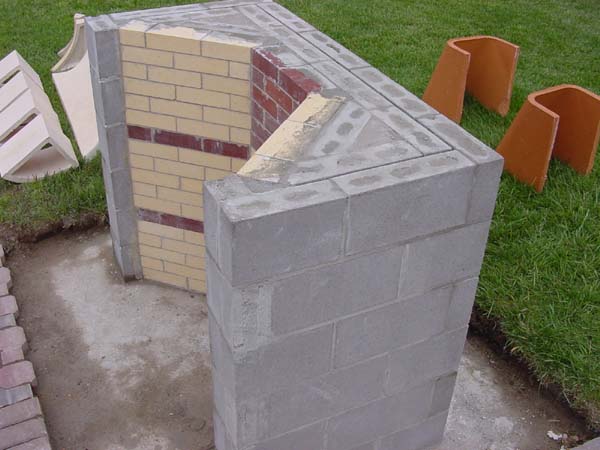Air Spaces Around Flues
(smoke chamber, throat and firebox)
The linings of a fireplace and chimney system (firebox, throat, smoke chamber and flues) will expand and contract a little with heat and so should not be bonded with the exterior masonry shell or the expansion might crack the shell. The most detailed description of how this might be done is in ASTM C1283, the clay flue liner installation standard that is referenced in the code:
5.5 Flue liners shall be surrounded by masonry on all sides but shall not be bonded to the surrounding masonry. The flue liner shall contact the chimney wall only as necessary for support and alignment in order to permit the flue liner to expand and contract freely. The separation of the flue liner from the surrounding concrete or masonry shall not exceed the wall thickness of the flue liner. Where Seismic Reinforcing requires the space between the flue liner and the chimney wall to be grouted solid the flue shall be wrapped with ceramic fiber paper capable of withstanding temperatures of 2100 deg. F to prevent the flue liner from bonding to the chimney walls. |
To ask technical questions or contribute to the discussion click here
|
Dear Mr. Buckley, First, thank you so much for your website on Rumford Fireplaces - it has been unbelievably helpful! Second, I'm not sure about the clearance that I should have between the smoke chamber/flue lining and the masonary structure. It appears from the instructions that I need to fill in around the firebox, throat, and possibly the smoke chamber with cement/mortar, but it appears that I must leave a space around the flue lining all tha way up. Could you give me a little instruction on what I should do. Again Thank you so much - I'm really excited about building a rumford in my home.
Sincerely,
Good question about a confusing issue. The linings of a fireplace and chimney system (firebox, throat, smoke chamber and flues) will expand and contract a little with heat and so should not be bonded with the exterior masonry shell or the expansion might crack the shell. The most detailed description of how this might be done is in ASTM 1283, the clay flue liner installation standard that is referenced in the code:
Best,
|

[Back to Technical Discussion]
Buckley Rumford Fireplace Home Page
Copyright 1996 - 2010 Jim Buckley
All rights reserved.
webmaster
